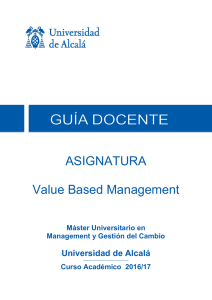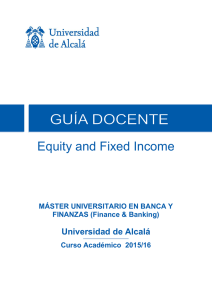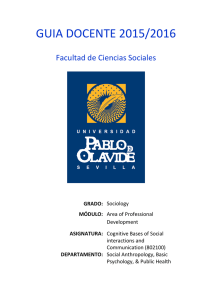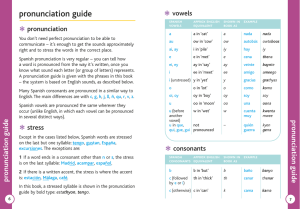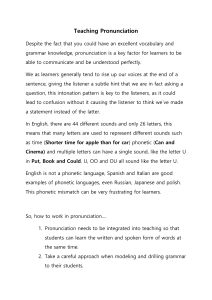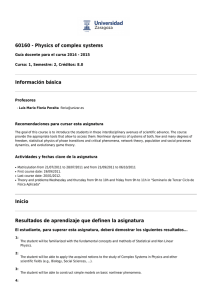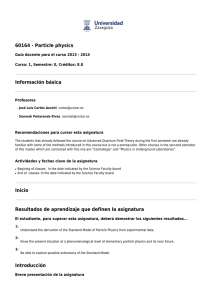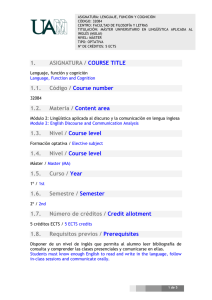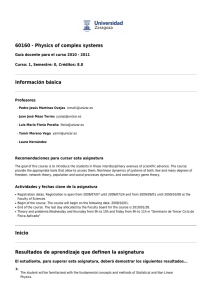fonética (inglés) - Universidad de Granada
Anuncio
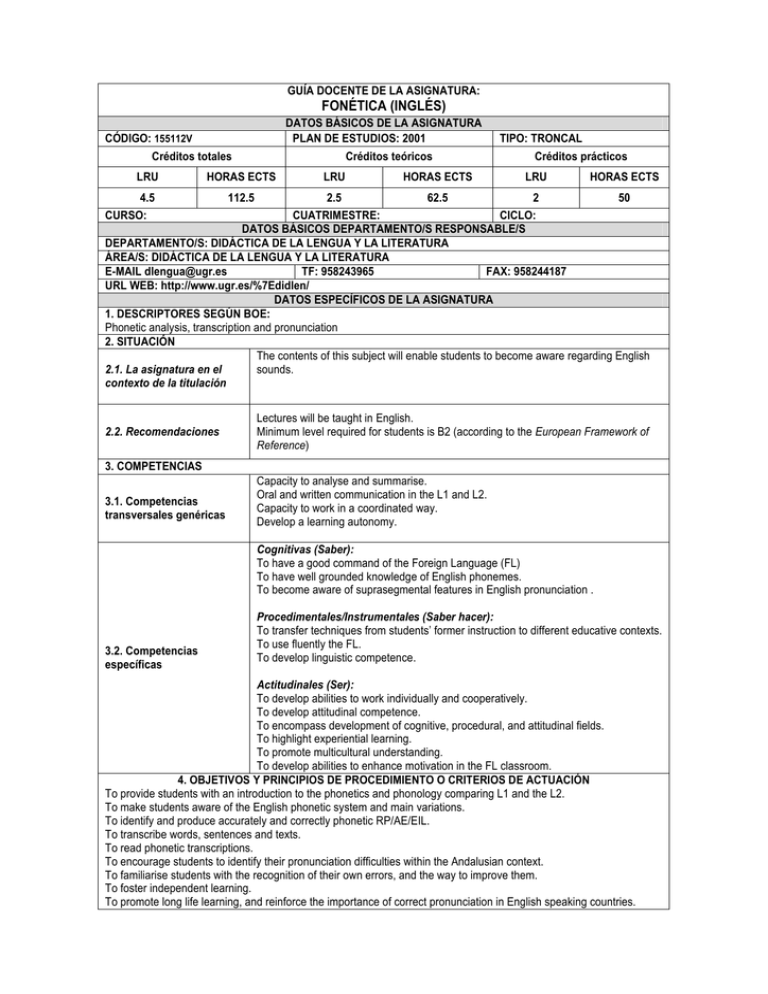
GUÍA DOCENTE DE LA ASIGNATURA: FONÉTICA (INGLÉS) DATOS BÁSICOS DE LA ASIGNATURA PLAN DE ESTUDIOS: 2001 CÓDIGO: 155112V Créditos totales LRU Créditos teóricos HORAS ECTS 4.5 CURSO: LRU HORAS ECTS TIPO: TRONCAL Créditos prácticos LRU HORAS ECTS 2.5 62.5 2 50 CUATRIMESTRE: CICLO: DATOS BÁSICOS DEPARTAMENTO/S RESPONSABLE/S DEPARTAMENTO/S: DIDÁCTICA DE LA LENGUA Y LA LITERATURA ÁREA/S: DIDÁCTICA DE LA LENGUA Y LA LITERATURA E-MAIL dlengua@ugr.es TF: 958243965 FAX: 958244187 URL WEB: http://www.ugr.es/%7Edidlen/ DATOS ESPECÍFICOS DE LA ASIGNATURA 1. DESCRIPTORES SEGÚN BOE: Phonetic analysis, transcription and pronunciation 2. SITUACIÓN The contents of this subject will enable students to become aware regarding English sounds. 2.1. La asignatura en el contexto de la titulación 2.2. Recomendaciones 112.5 Lectures will be taught in English. Minimum level required for students is B2 (according to the European Framework of Reference) 3. COMPETENCIAS 3.1. Competencias transversales genéricas Capacity to analyse and summarise. Oral and written communication in the L1 and L2. Capacity to work in a coordinated way. Develop a learning autonomy. Cognitivas (Saber): To have a good command of the Foreign Language (FL) To have well grounded knowledge of English phonemes. To become aware of suprasegmental features in English pronunciation . 3.2. Competencias específicas Procedimentales/Instrumentales (Saber hacer): To transfer techniques from students’ former instruction to different educative contexts. To use fluently the FL. To develop linguistic competence. Actitudinales (Ser): To develop abilities to work individually and cooperatively. To develop attitudinal competence. To encompass development of cognitive, procedural, and attitudinal fields. To highlight experiential learning. To promote multicultural understanding. To develop abilities to enhance motivation in the FL classroom. 4. OBJETIVOS Y PRINCIPIOS DE PROCEDIMIENTO O CRITERIOS DE ACTUACIÓN To provide students with an introduction to the phonetics and phonology comparing L1 and the L2. To make students aware of the English phonetic system and main variations. To identify and produce accurately and correctly phonetic RP/AE/EIL. To transcribe words, sentences and texts. To read phonetic transcriptions. To encourage students to identify their pronunciation difficulties within the Andalusian context. To familiarise students with the recognition of their own errors, and the way to improve them. To foster independent learning. To promote long life learning, and reinforce the importance of correct pronunciation in English speaking countries. 5. CONTENIDOS TEÓRICOS Y PRÁCTICOS Phonetics and phonology: a theoretical framework. RP and other models of pronunciation. Description of the English vowels, diphthongs and triphthongs. Description of the English consonants. Accent, stress and intonation patterns. Vocalic system: sound discrimination, spelling vs. phoneme, production and perception. Consonant system: sound discrimination, spelling vs. phoneme, production and perception. Introduction to suprasegmental features. 6. METODOLOGÍA Explanation of theoretical concepts. Provision of relevant articles to support the theoretical explanations. Seminars to clarify specific theoretical topics and critical discussion of the bibliography provided. Ear training and discrimination tasks. Practise on reading written and phonological texts. Listening of visual and aural materials. To write an essay on didactic materials to be implemented in the Primary classroom. Use of internet as a source of independent practice and learning. 7. HORAS ESTIMADAS DE TRABAJO DEL ALUMNO/A ACTIVIDADES 7.1. Actividades gran grupo dirigidas por el docente 7.2. Actividades pequeño grupo dirigidas por el docente 7.3 Actividades autónomas del alumnado 10 10 22,5 Observaciones: Criterios Instrumentos y técnicas 8. EVALUACIÓN Students will be assessed on the following bases: Autonomous learning: 20% Written exam: 30% Oral exam: 50%. In order to sit the oral exam, students have to pass the written one. Exams (oral and written) Projects. Criterios de calificación 9. BIBLIOGRAFÍA General Alcaraz, E. & Moody, B. (1989). Fonética inglesa para españoles. Alcoy: Marfil. Hancock, M. (2003). English Pronunciation in Use. Cambridge: CUP. Jones, D. (2000). English Pronouncing Dictionary. London: Dent. Pavón Vázquez, Víctor (2001). Sistema de software para la contribución a la docencia de la fonética inglesa. V. 1.0. Vocales y Consonantes. Córdoba: Servicio de Publicaciones Universidad de Córdoba. The English Linguistics Study Group (1997). Ejercicios de transcripción fonética en inglés. Madrid: Ed. Anglodidáctica. Baker, A. (2003). Ship or Sheep? An Intermediate Pronunciation Course. Cambridge: CUP. Jones, D. (2000). English Pronouncing Dictionary. London: Dent. Ruiz Cecilia, R. and Villoria, J. (2006). Training Course in Phonetics. Tasks for developing Específica transcription and pronunciation skills. Granada: Comares. Sánchez Benedito, F. (2004). Manual de pronunciación inglesa comparada con la española. Granada: Comares. www.ugr.es/local/ftsaez/fonetica.htm 10 CALENDARIO Y/O CRONOGRAMA ORIENTATIVO DE LA ASIGNATURA
